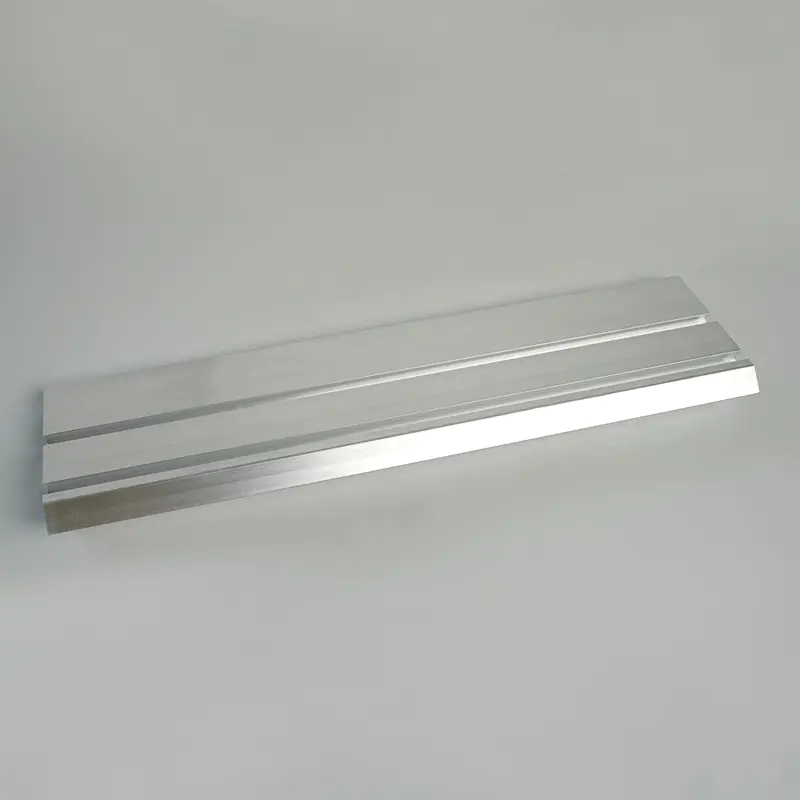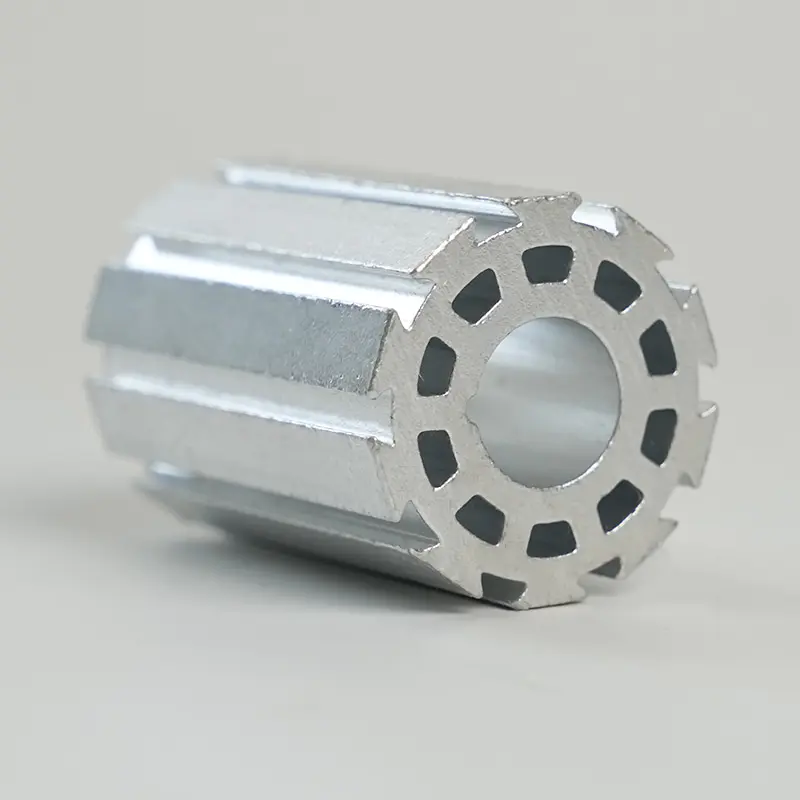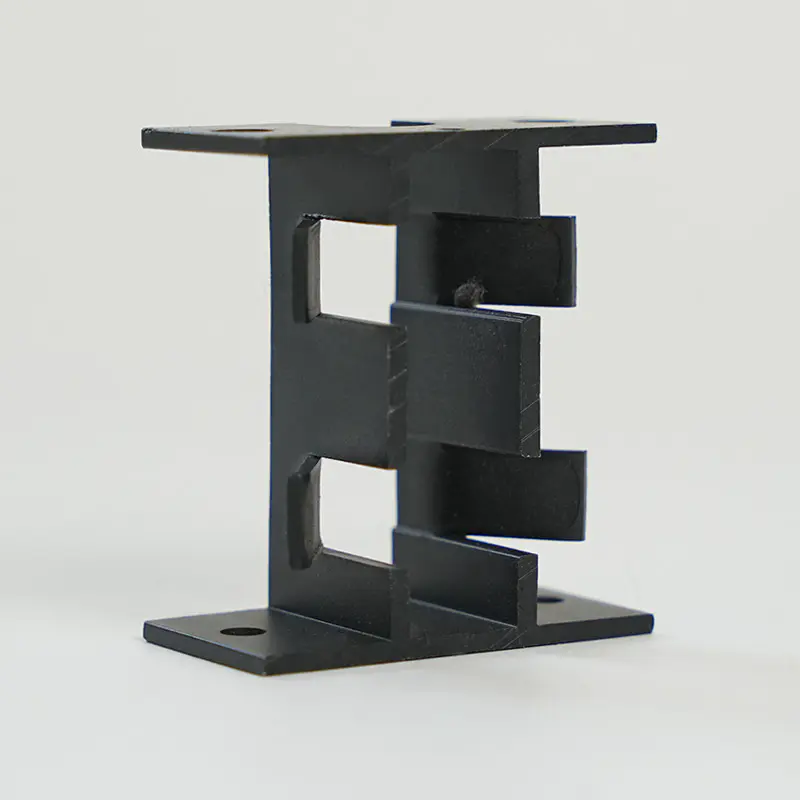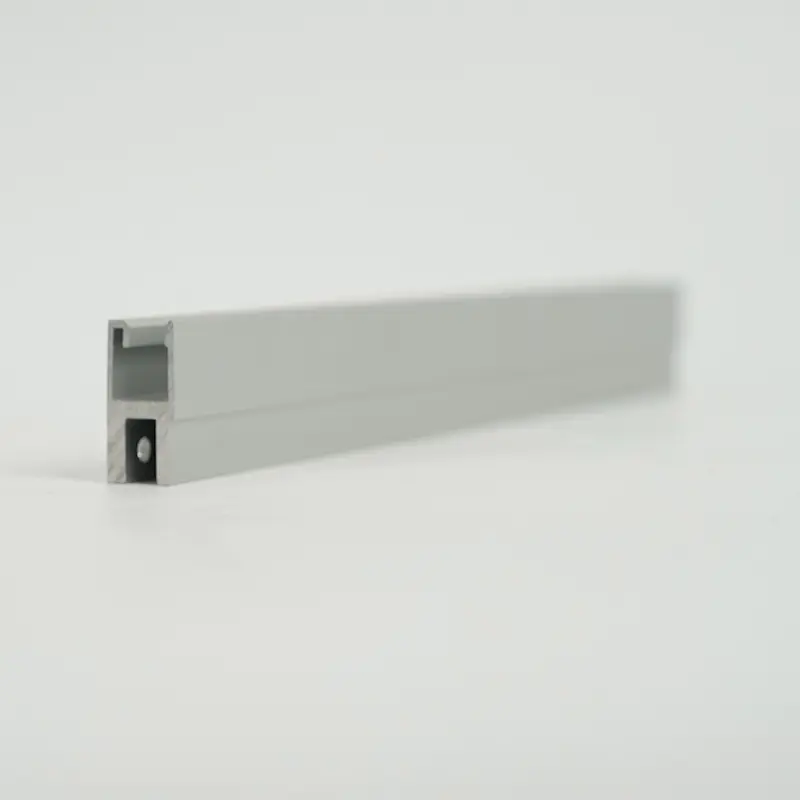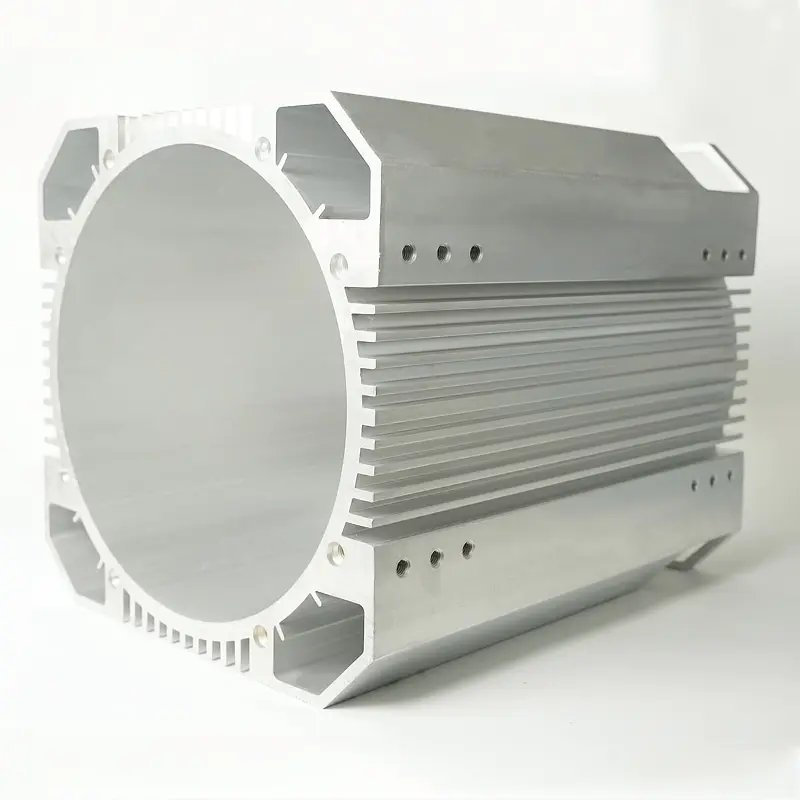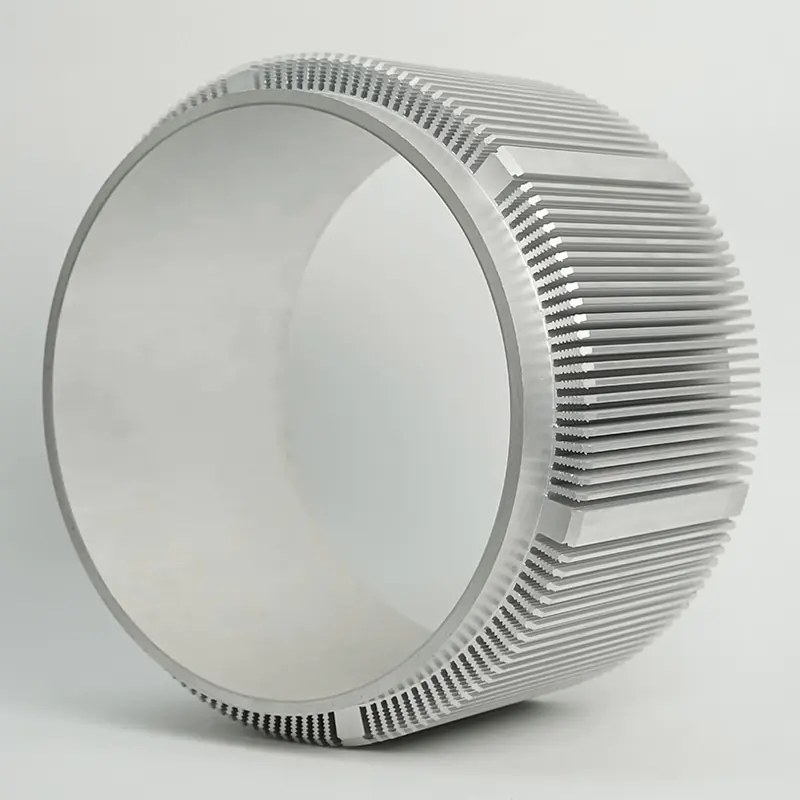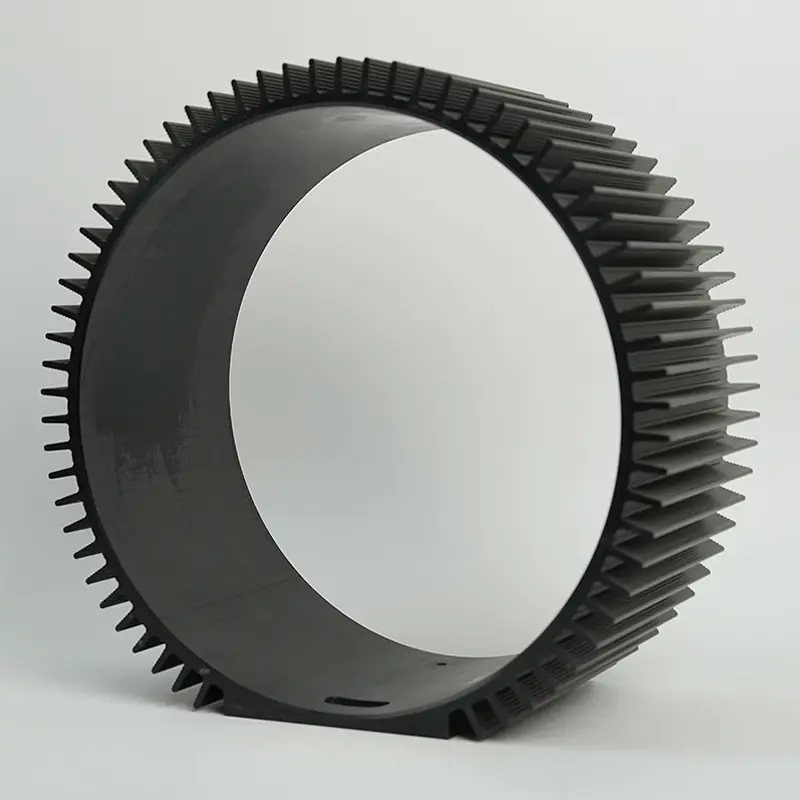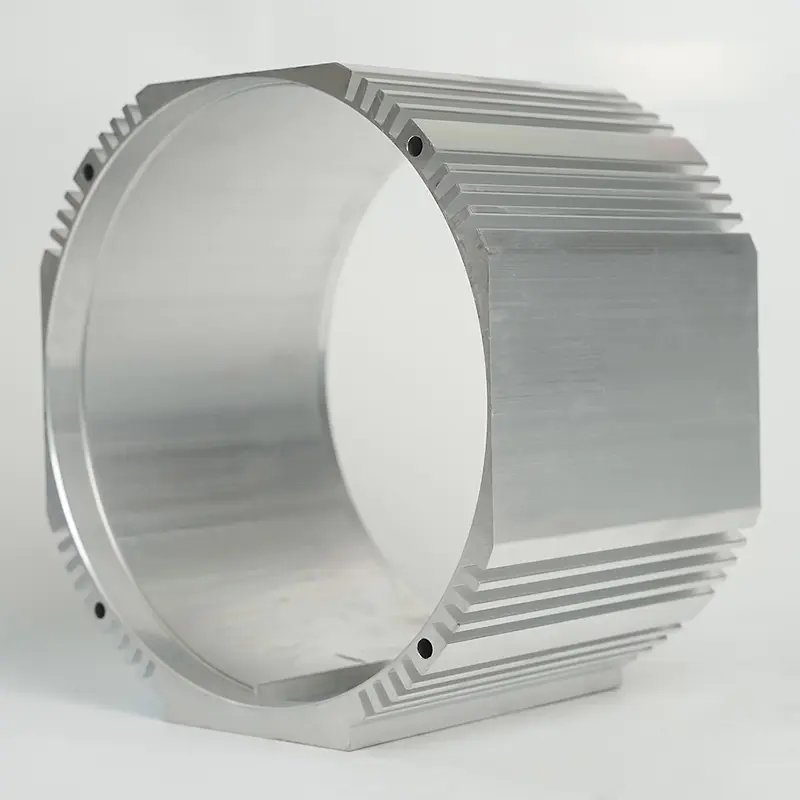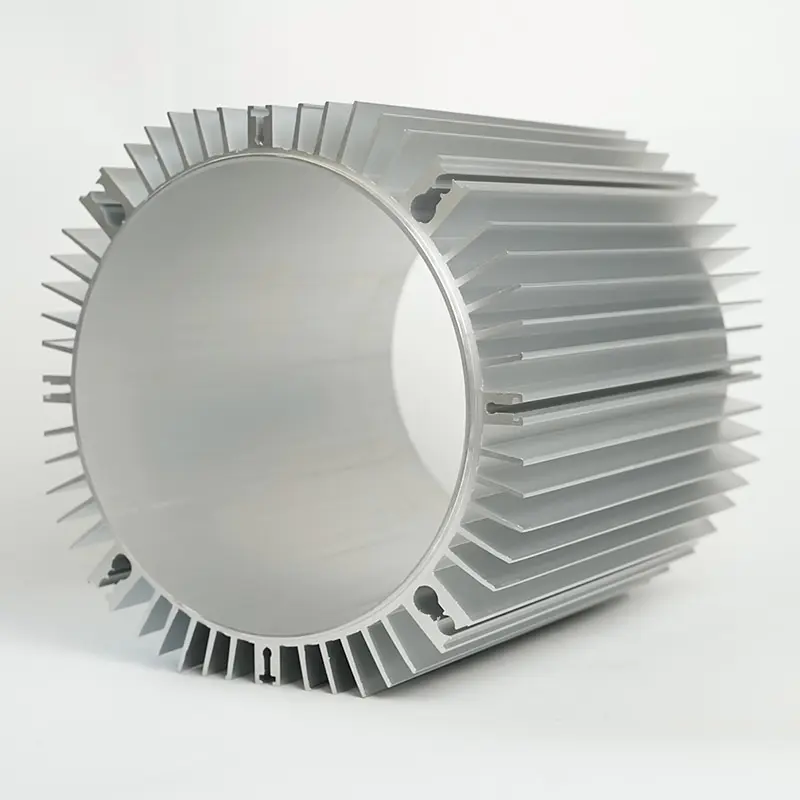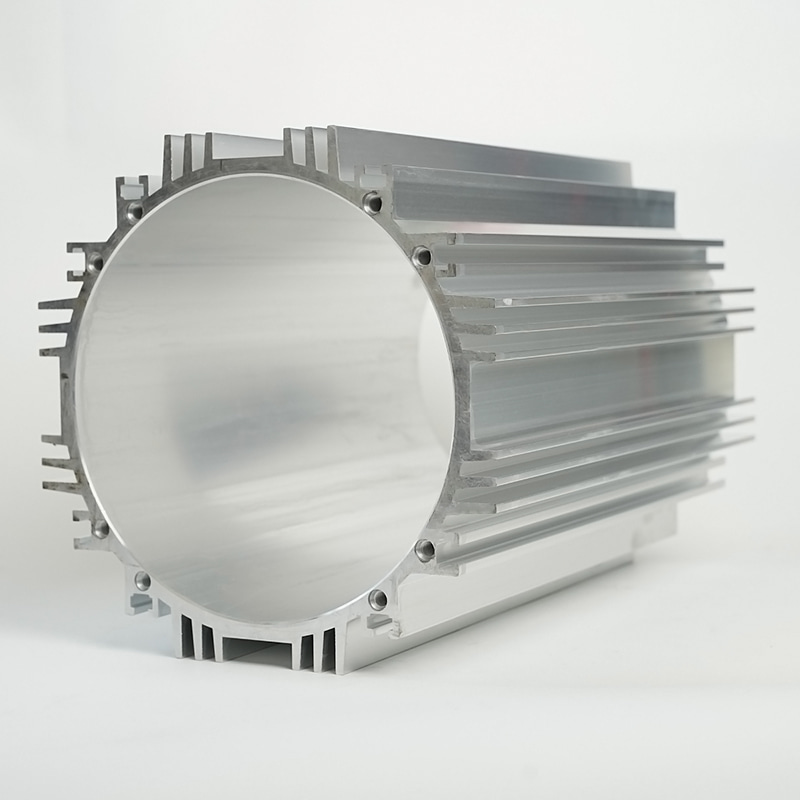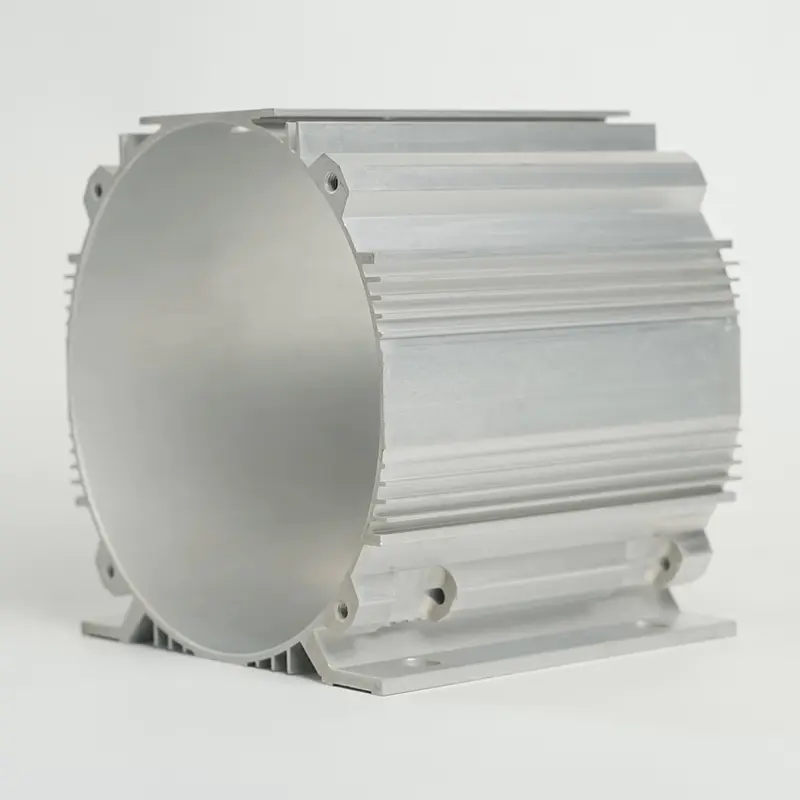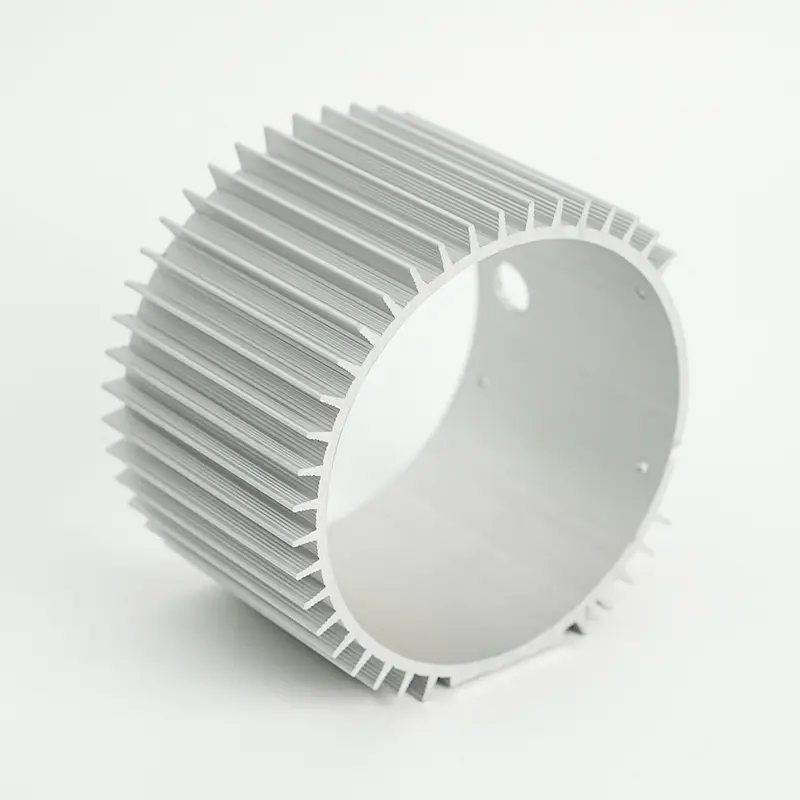In the design and manufacturing of heat sinks, strict control of Housing dimension tolerance is one of the key factors to ensure excellent heat dissipation performance. The main function of a heat sink is to quickly transfer the heat generated by electronic components to the external environment, thereby keeping the electronic components within an appropriate working temperature range and preventing overheating damage. In order to achieve efficient heat transfer, the heat sink Housing must be in full contact with the heat sink chip, avoiding any gaps or gaps.
Generally speaking, the dimensional tolerance of the heat sink Housing needs to be controlled within ±0.05mm. This accuracy requirement seems very small, but it is a huge challenge for the manufacturing process of heat sinks. Any dimensional deviation beyond this tolerance range may cause tiny gaps between the heat sink and the chip, thereby increasing thermal resistance and reducing heat dissipation efficiency.
In order to meet this strict tolerance requirement, heat sink manufacturers need to adopt sophisticated processing equipment and process control measures. First of all, in terms of material selection, it is necessary to use metal materials with good dimensional stability and low thermal expansion coefficient, such as aluminum alloy or copper alloy. These materials have relatively small dimensional changes during processing and use, which is conducive to maintaining dimensional accuracy.
In terms of processing technology, it is necessary to adopt high-precision CNC machine tools and precision measuring instruments to ensure the dimensional accuracy during processing. At the same time, it is also necessary to strictly control the processing environment, such as temperature and humidity, to reduce the influence of environmental factors on the dimensions of the workpiece.
During the assembly process, a series of measures also need to be taken to ensure the precise fit between the heat sink Housing and the chip. For example, positioning pins and positioning holes can be used to accurately position the relative position of the heat sink and the chip. At the same time, elastic clamping mechanism or special adhesives can also be used to firmly fix the heat sink Housing on the chip surface, eliminating any possible gaps.
In addition to the control of the manufacturing process, the design of the heat sink also needs to consider the impact of dimensional tolerance. The designer needs to reasonably design the size and shape of the heat sink Housing according to the expected tolerance range, to ensure that it can achieve good contact with the chip even in the worst case. At the same time, it is also necessary to reserve a certain margin in the design to accommodate possible dimensional deviations.
Strict control of the dimensional tolerance of the heat sink Housing is one of the key factors to ensure excellent heat dissipation performance. By adopting sophisticated processing equipment and process control measures, selecting suitable materials, and Reasonable design, manufacturers can produce high-quality heat sinks that meet the tolerance requirements of ±0.05mm, and provide strong protection for the reliable operation of electronic devices.

Web Menu
Product Search
Exit Menu
Industry News
Home / News / Industry News / Strict Control of Heat Sink Housing Dimensions Tolerance is a Key Factor to Ensure Excellent Heat Dissipation Performance
Product Categories
Strict Control of Heat Sink Housing Dimensions Tolerance is a Key Factor to Ensure Excellent Heat Dissipation Performance
Recommended Products
-
 Add: 78 Malgang Road, Jingjiang City, Taizhou City, Jiangsu Province, China
Add: 78 Malgang Road, Jingjiang City, Taizhou City, Jiangsu Province, China
-
 Tel: +86 189-5262-0099
Tel: +86 189-5262-0099
-
 E-mail: [email protected]
E-mail: [email protected]
Quick link
Products
Message
Copyright 2023 Jingjiang He Tai Motor Parts Manufacturing Co., Ltd. All Rights Reserved
Custom Micro Aluminum Gold Motor Shell


 English
English Español
Español
